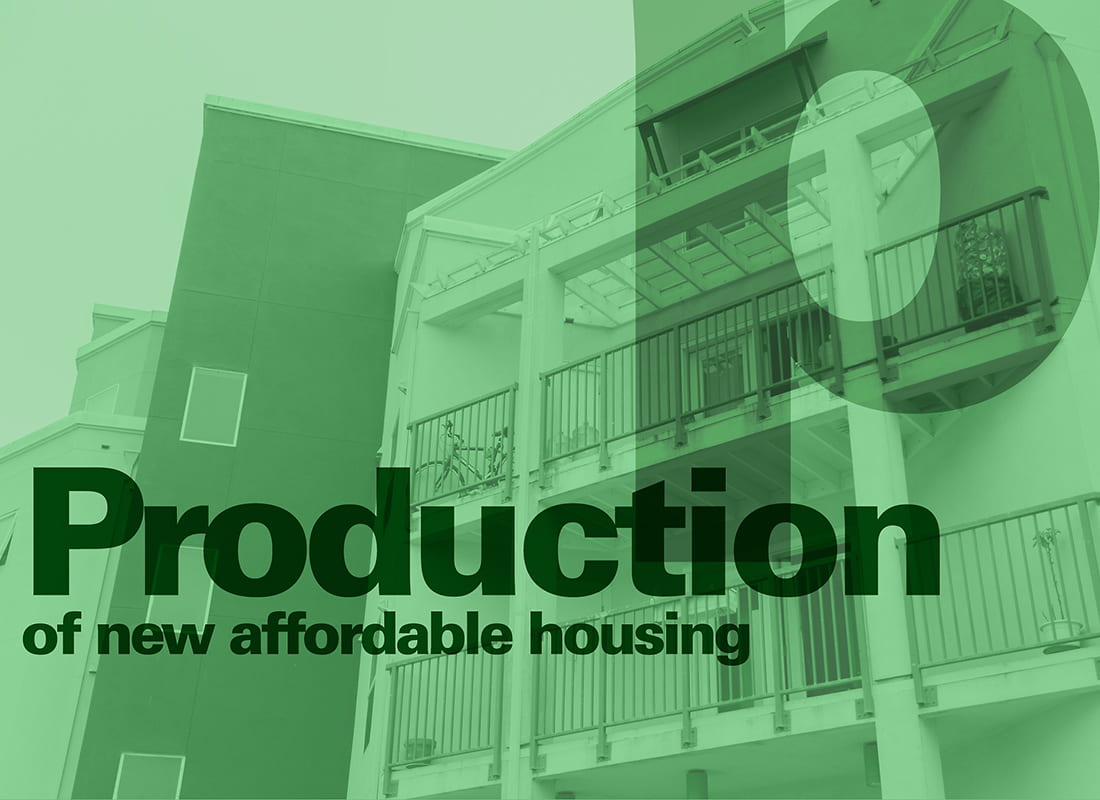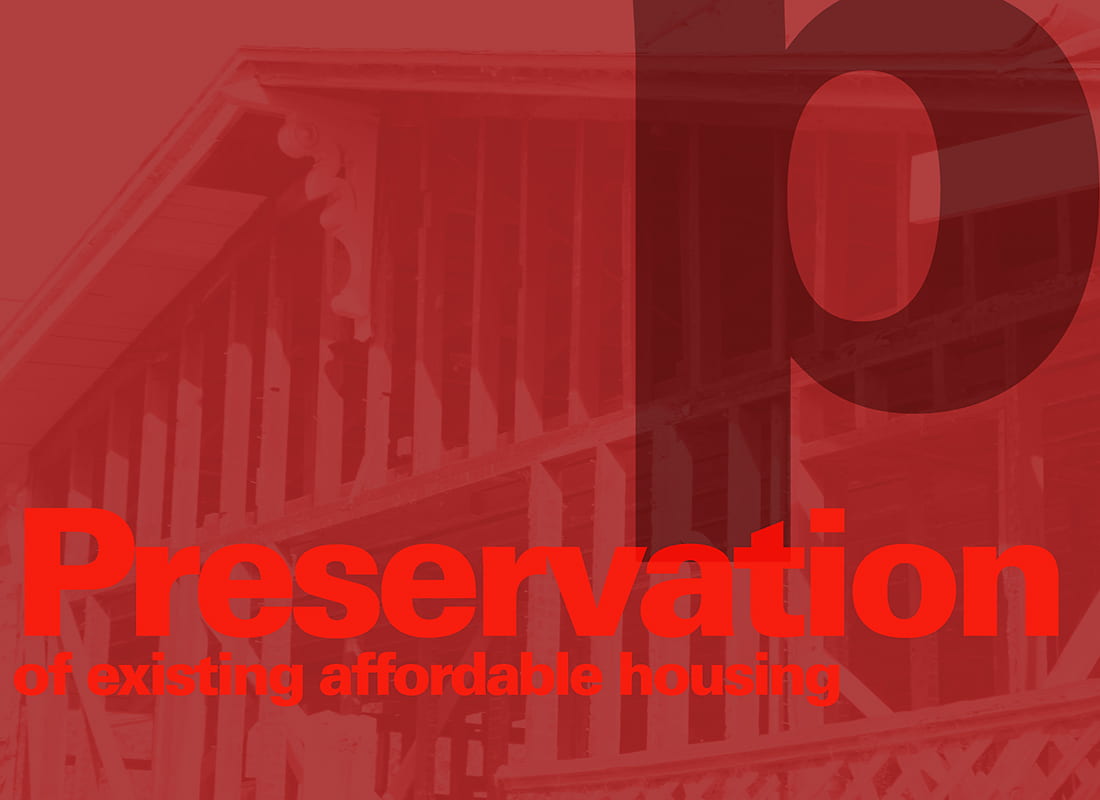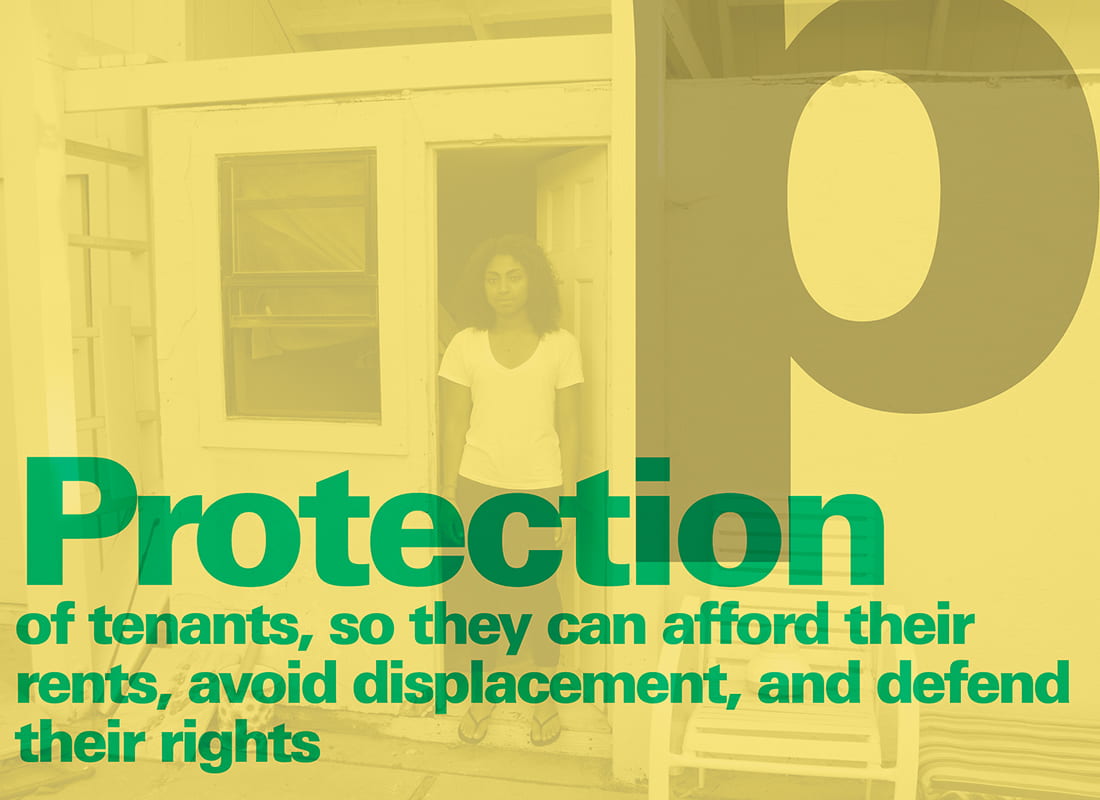Defining Tenant Protections
What is Rent Control?
Rent control and rent stabilization ordinances protect tenants from excessive rent increases, while allowing landlords a “fair return” on their investments. Such ordinances limit rent increase to certain percentages, but California state law allows landlords to raise rents to the market rate once the unit becomes vacant.
Beyond the above two features, rent control measures may be “stronger” or “weaker.” [1] For instance, rent control may or may not also include restrictions on the pricing of new construction, just-cause eviction protections, requirements that landlords petition to exceed rent limits, and the use of “rent boards” to handle petitions and register units with the city.
What are Rent Review Boards?
Rent review boards mediate between tenants and landlords on issues related to rent increases, and encourage them to come into voluntary agreement in the setting of these increases. As mediators, the board normally does not make a binding decision in the case. Rent boards can either be independently elected or appointed by officials. Both tenants and owners can petition a rent board for or against a change in rent amount, as well as use rent boards in the mediation of disputes and for legal advice. Rent boards are typically funded through initial start-up funds or in-kind donations —for office space and staff. Following this they are funded independently through small per-unit annual fees, paid by landlords, taking no additional money from the general fund. For an analysis, see the Sentinel study of rent boards in the Bay Area.
What are Just Cause Eviction Protections?
Just cause eviction statutes are laws that allow tenants to be evicted only for specific reasons. These “just causes” can include a failure to pay rent, violation of the lease terms, chronically late rent payments, and the intention of the landlord to occupy the unit themselves or rent the unit to an immediate family member. The notice required for each just cause reason may vary.
What Support Services exist for Tenants?
Organizations may provide pro-bono tenant support services, including tenant legal defense, rights outreach, and/or emergency funds to stop evictions or help with relocation. These services may be provided by a city or county, whether through their public attorney’s office or through a contract with legal aid or social service agency. [e.g.: Berkeley Housing Retention Program; Oakland City Attorney] They may be provided by independent legal clinics or agencies. Or they may be offered through Rental Boards.
Who would be covered by tenant protections?
Rent control and stabilization apply to tenants in non-subsidized rental units—i.e. not in public housing or units accepting housing choice vouchers (also known as Section 8). Eviction protections, as well as legal aid and financial assistance, apply to tenants in subsidized and non-subsidized units alike. Most forms of tenant protection are governed at both the city and state level, while federal guidelines can apply to federally-subsidized units. [For more on federal laws protecting tenants, see here:
In California, local rent control measures and eviction ordinances are limited by the statewide law Costa Hawkins. to exclude all single-family homes and units built after 1995. This would change should Proposition 10, the effort to repeal Costa Hawkins, is passed in November. If both Santa Cruz rent control ordinance Measure M and California Proposition 10 are passed by voters this November, rent control will apply to nearly all rental units in Santa Cruz. However, even under Costa-Hawkins, about 6,000 Santa Cruz units, or 34,000 people, will be covered by rent control – or more than half of the Santa Cruz population of 60,000. Nearly all rentals will be covered by Just Cause protections in either case. As we discuss on the Debates page, people most likely to benefit from these regulations will be those who are hardest hit by the rental housing crisis: low-income renters, families, seniors, and other vulnerable populations.
Compare our policies to those of other bay area locations using The Urban Displacement Project at UC Berkeley’s interactive map.
The three Ps
What are: rent control, rent review boards and just cause eviction protection?
What support services exist for tenants?
Who would be covered?
Why regulate rent?
Econ 101 arguments and responses to them
Early history, 1970s-2010s
The growing rent control movement
Sources:
[1] The California Tenants’ Rights guide distinguishes between two types of rent control policies: “Weak Rent Control” laws allow landlords to raise the rent generously, and even above the fixed amount unless a tenant protests to a rent board. These policies do not require landlords to register their units with the city. “Moderate-to-Strict Rent Control” laws require the landlord to “bear the burden of petitioning the rent board for an above-formula rent increase and of justifying the need for such an increase based on certain cost factors listed in the ordinance,” include a just cause evictions ordinance, and require landlords to register units with the city.
[2] Collins, ibid, 4.
[3] Frey, Pommerehne, Schnieder and Gilbert, “Consensus and Dissension Among Economists: An Empirical Inquiry,” 74 American Economic Review, 986 (1984); Paul Krugman, “Reckonings; A Rent Affair.” New York Times, 2000 https://www.nytimes.com/2000/06/07/opinion/reckonings-a-rent-affair.html
[4] Keating, W. Dennis, Michael B. Teitz, and Andrejs Skaburskis. Rent Control: Regulation and the Rental Housing Market (New Brunswick: Center for Urban Policy Research, 1998), 46. Beyond MNOI, fair-return standards can also include: cash-flow levels, return on gross rent, return on equity,, return on value, and percentage of net operating income.
[5] Dennis Keating, “Rent Control in California: Responding to the Housing Crisis.” Berkeley: Regents of the University of California, California Policy Seminar, No 16, 1983.
[6] Timothy L. Collins, “Rent Regulation in New York: Myths and Facts, Second Edition.” New York State Tenants & Neighbors Information Service, May 2009.
[7] Michael Mandel, “Does Rent Control Hurt Tenants?: A Reply to Epstein,” Brooklyn Law Review, vol. 54, 1267, 1268 (1989).
[8] For a full list of of cities with rent control, partial rentrol, and mobile home rent control in California, see: https://www.caltenantlaw.com/RCcities.htm




